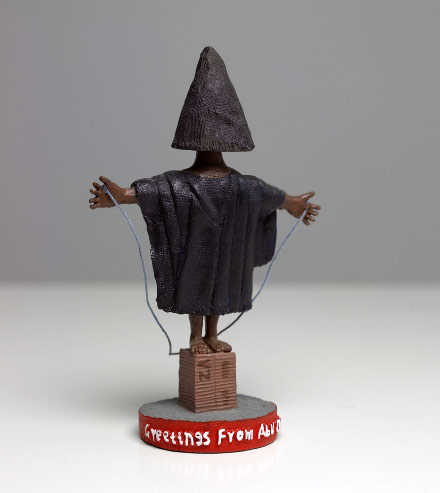Phillip Toledano’s ‘America - The Gift Shop’

There are many different ways to create political art. One possibility is to use a photo shoot to take unflattering images (to thus abuse your client-employer relationship, and to then add insult to injury by saying in public that your employer was stupid to hire you in the first place) and to then deface those images in a Photoshop hack job, essentially creating what amounts to the kind of “art” one typically finds on the walls of public bathrooms. Phillip Toledano knew he could do much better than that and decided to do an installation project, called America - The Gift Shop: “If American foreign policy had a gift shop, what would it sell?” For example, Abu Ghraib bobble heads (like the one shown above).
I received various emails after my Greenberg post, and it was interesting (and a bit sad) to see that while people agreed with what I had written (the people who thought Greenberg’s “art” work was great apparently didn’t bother to write in), the tenor was that, in the end, Greenberg’s career will only benefit from the publicity (probably true, even though her clientele will now probably only be people who really need to prove their “liberal” credentials by using “daring” photography) and, more importantly, that her political “art” will get way more exposure than, for example, Joel-Peter Wikin’s or, possibly, Phillip’s.
Needless to say, if you used only that criterion, the “best” way for political art would be to get a ticket for the State of the Union address (assuming you could even pull that off) and then strip down to nothing to run in a circle yelling obscenities. That would get you noticed. I don’t think the amount of publicity is a very good criterion for art, though (Damien Hirst might disagree), even for political art.
Political art, of course, is a weird beast: Don’t you, as an artist, want to reach as many people as possible? Maybe it helps a little to look at something else I linked to recently. John F. Kennedy said that “art is not a form of propaganda; it is a form of truth.” In part, this is not a surprising statement, given that he was a politician (and politicians tend to dismiss - other people’s - propaganda); but the statement still is very smart, if you’re willing to put the focus on what he says art is, namely a form of truth.